
Ernest Henry Shackleton was an Anglo-Irish Antarctic explorer who led three British expeditions to the Antarctic. He was one of the principal figures of the period known as the Heroic Age of Antarctic Exploration.
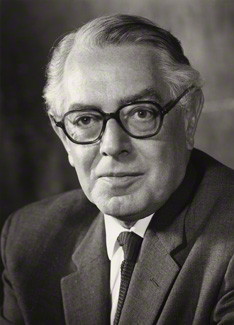
Edward Arthur Alexander Shackleton, Baron Shackleton, was a British geographer, Royal Air Force officer and Labour Party politician.

Allen Stuart Drury was an American novelist. During World War II, he was a reporter in the Senate, closely observing Presidents Franklin D. Roosevelt and Harry S. Truman, among others. He would convert these experiences into his first novel Advise and Consent, for which he won the Pulitzer Prize for Fiction in 1960. Long afterwards, it was still being praised as ‘the definitive Washington tale’. His diaries from this period were published as A Senate Journal 1943–45.

Christopher Ellis Drury is an American professional ice hockey executive and former player. He has served as the president and general manager for the New York Rangers since May 5, 2021. He previously served as the general manager of the Rangers American Hockey League (AHL) affiliate, the Hartford Wolf Pack.

The voyage of the James Caird was a journey of 1,300 kilometres (800 mi) from Elephant Island in the South Shetland Islands through the Southern Ocean to South Georgia, undertaken by Sir Ernest Shackleton and five companions to obtain rescue for the main body of the stranded Imperial Trans-Antarctic Expedition of 1914–1917. Many historians regard the voyage of the crew in a 22.5-foot (6.9 m) ship's boat through the "Furious Fifties" as the greatest small-boat journey ever completed.
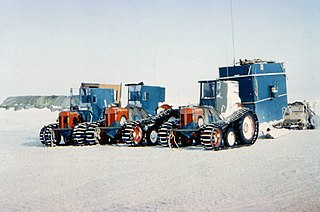
The Commonwealth Trans-Antarctic Expedition (CTAE) of 1955–1958 was a Commonwealth-sponsored expedition that successfully completed the first overland crossing of Antarctica, via the South Pole. It was the first expedition to reach the South Pole overland for 46 years, preceded only by Amundsen's expedition and Scott's expedition in 1911 and 1912.

Shackleton Glacier is a major Antarctic glacier, over 60 nautical miles long and from 5 to 10 nautical miles wide, descending from the Antarctic Plateau from the vicinity of Roberts Massif and flowing north through the Queen Maud Mountains to enter the Ross Ice Shelf between Mount Speed and Waldron Spurs. Discovered by the United States Antarctic Service (USAS) (1939–41) and named by the Advisory Committee on Antarctic Names (US-ACAN) for Sir Ernest Shackleton, British Antarctic explorer.

The Imperial Trans-Antarctic Expedition of 1914–1917 is considered to be the last major expedition of the Heroic Age of Antarctic Exploration. Conceived by Sir Ernest Shackleton, the expedition was an attempt to make the first land crossing of the Antarctic continent. After Roald Amundsen's South Pole expedition in 1911, this crossing remained, in Shackleton's words, the "one great main object of Antarctic journeyings". Shackleton's expedition failed to accomplish this objective but became recognized instead as an epic feat of endurance.

Endurance was the three-masted barquentine in which Sir Ernest Shackleton and a crew of 27 men sailed for the Antarctic on the 1914–1917 Imperial Trans-Antarctic Expedition. The ship, originally named Polaris, was built at Framnæs shipyard and launched in 1912 from Sandefjord in Norway. When one of her commissioners, the Belgian Gerlache, went bankrupt, the remaining one sold the ship for less than the shipyard had charged - but as Lars Christensen was the owner of Framnæs, there was no hardship involved. The ship was bought by Shackleton in January 1914 for the expedition, which would be her first voyage. A year later, she became trapped in pack ice and finally sank in the Weddell Sea off Antarctica on 21 November 1915. All of the crew survived her sinking and were eventually rescued in 1916 after using the ship's boats to travel to Elephant Island and Shackleton, the ship's captain Frank Worsley, and four others made a voyage to seek help.

The NimrodExpedition of 1907–1909, otherwise known as the British Antarctic Expedition, was the first of three successful expeditions to the Antarctic led by Ernest Shackleton and his second expedition to the Antarctic. Its main target, among a range of geographical and scientific objectives, was to be first to the South Pole. This was not attained, but the expedition's southern march reached a Farthest South latitude of 88° 23' S, just 97.5 nautical miles from the pole. This was by far the longest southern polar journey to that date and a record convergence on either Pole. A separate group led by Welsh Australian geology professor Edgeworth David reached the estimated location of the South Magnetic Pole, and the expedition also achieved the first ascent of Mount Erebus, Antarctica's second highest volcano.
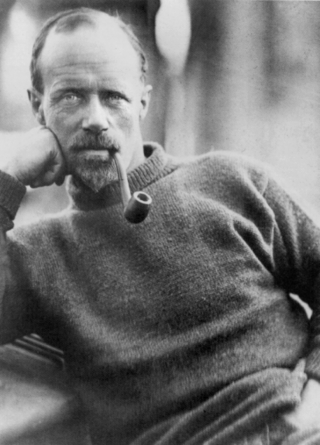
John Robert Francis Wild was an English sailor and explorer. He participated in five expeditions to Antarctica during the Heroic Age of Antarctic Exploration, for which he was awarded the Polar Medal with four bars, one of only two men to be so honoured, the other being Ernest Joyce.

The Ross Sea party was a component of Sir Ernest Shackleton's 1914–1917 Imperial Trans-Antarctic Expedition. Its task was to lay a series of supply depots across the Great Ice Barrier from the Ross Sea to the Beardmore Glacier, along the polar route established by earlier Antarctic expeditions. The expedition's main party, under Shackleton, was to land near Vahsel Bay on the Weddell Sea on the opposite coast of Antarctica, and to march across the continent via the South Pole to the Ross Sea. As the main party would be unable to carry sufficient fuel and supplies for the whole distance, their survival depended on the Ross Sea party setting up supply depots, which would cover the final quarter of their journey.

The Shackleton–Rowett Expedition (1921–22) was Sir Ernest Shackleton's last Antarctic project, and the final episode in the Heroic Age of Antarctic Exploration.
"The Muffin Man" is a traditional nursery rhyme, children's song, or children's game of English origin. It has a Roud Folk Song Index number of 7922.
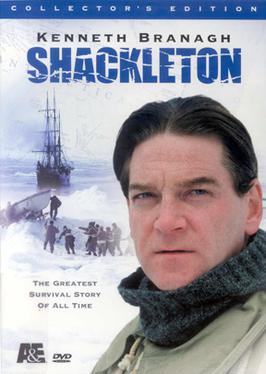
Shackleton is a 2002 British television miniseries. It was written and directed by Charles Sturridge and starring Kenneth Branagh as explorer Sir Ernest Shackleton. The film tells the true story of Shackleton's 1914 Antarctic expedition on the ship Endurance. The cast includes Kevin McNally, Lorcan Cranitch, Embeth Davidtz, Danny Webb, Matt Day and Phoebe Nicholls as Lady Shackleton. It was filmed in the UK, Iceland and Greenland. The film used first-hand accounts by the men on the expedition to retell the story. Shackleton biographer Roland Huntford was a production advisor.
Gordon Glacier is an Antarctic glacier of at least 24 nautical miles in length flowing in a northerly direction beginning in the Crossover Pass, flowing through the Shackleton Range to finally meet the Slessor Glacier.
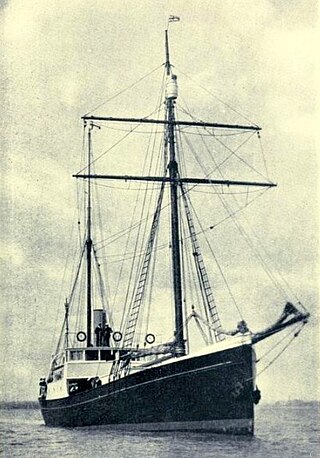
Quest, a low-powered, schooner-rigged steamship that sailed from 1917 until sinking in 1962, is best known as the polar exploration vessel of the Shackleton–Rowett Expedition of 1921–1922. It was aboard this vessel that Sir Ernest Shackleton died on 5 January 1922 while the vessel was in harbour in South Georgia. Prior to and after the Shackleton-Rowett Expedition, Quest operated in commercial service as a seal-hunting vessel or sealer. Quest was also the primary expedition vessel of the British Arctic Air Route Expedition to the east coast of the island of Greenland in 1930–1931.
The Blaiklock Glacier is a glacier 16 nautical miles (30 km) long, flowing north from Turnpike Bluff, then northwest to Mount Provender and Mount Lowe in the western part of the Shackleton Range, Antarctica.
Cornwall Glacier is a glacier 9 nautical miles (17 km) long, flowing south from Crossover Pass in the Shackleton Range to join Recovery Glacier east of Ram Bow Bluff.

Extinct is a 2021 animated science fiction comedy film directed by David Silverman, and co-directed by Raymond S. Persi, from a screenplay by Joel Cohen, John Frink, and Rob LaZebnik. It features the voices of Rachel Bloom, Adam Devine, Zazie Beetz, Ken Jeong, Catherine O'Hara, Benedict Wong, Reggie Watts, and Jim Jefferies in a story following two flummels named Ed and Op, an extinct cat-like species with giant holes in the center, that find themselves transported from their island home in the year 1835 to modern day Shanghai.














